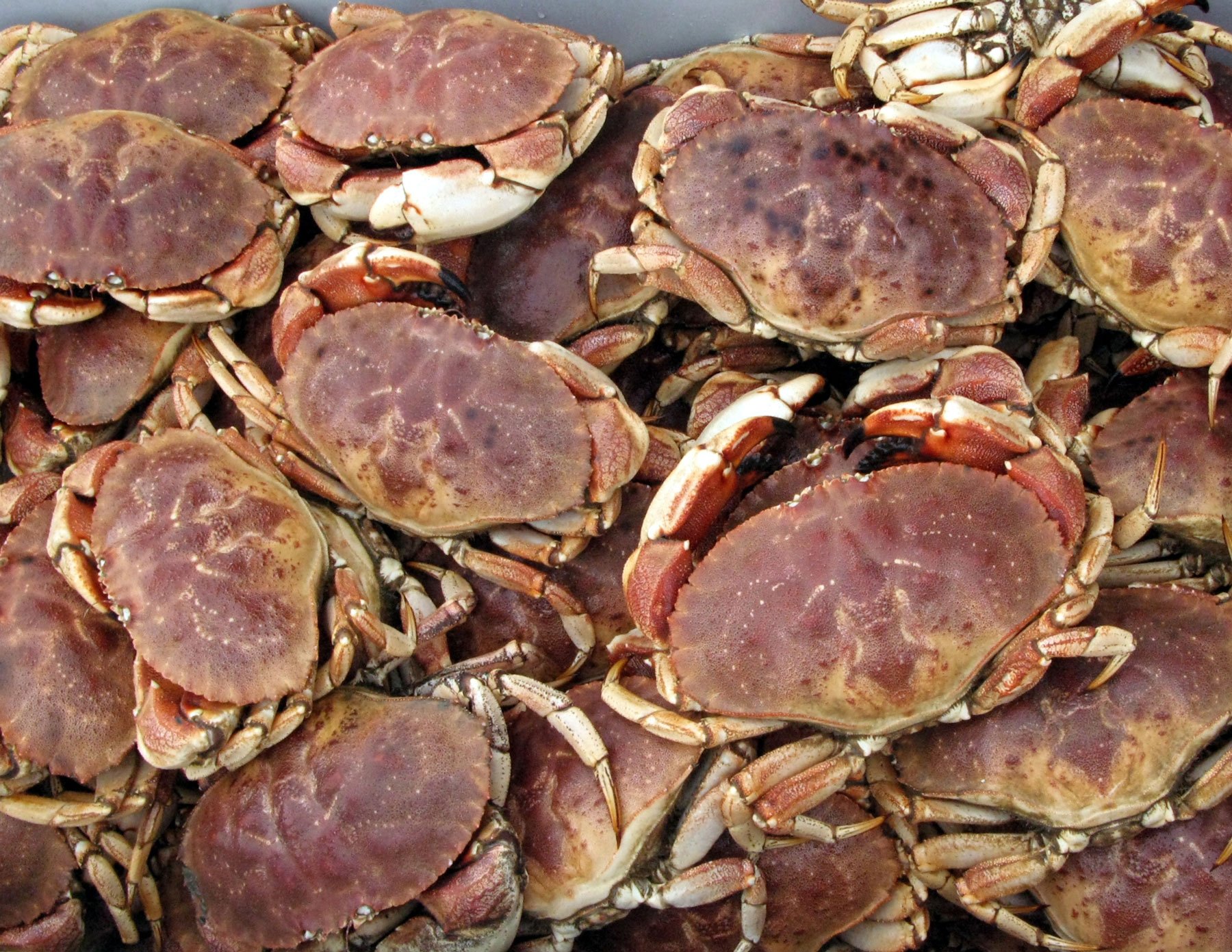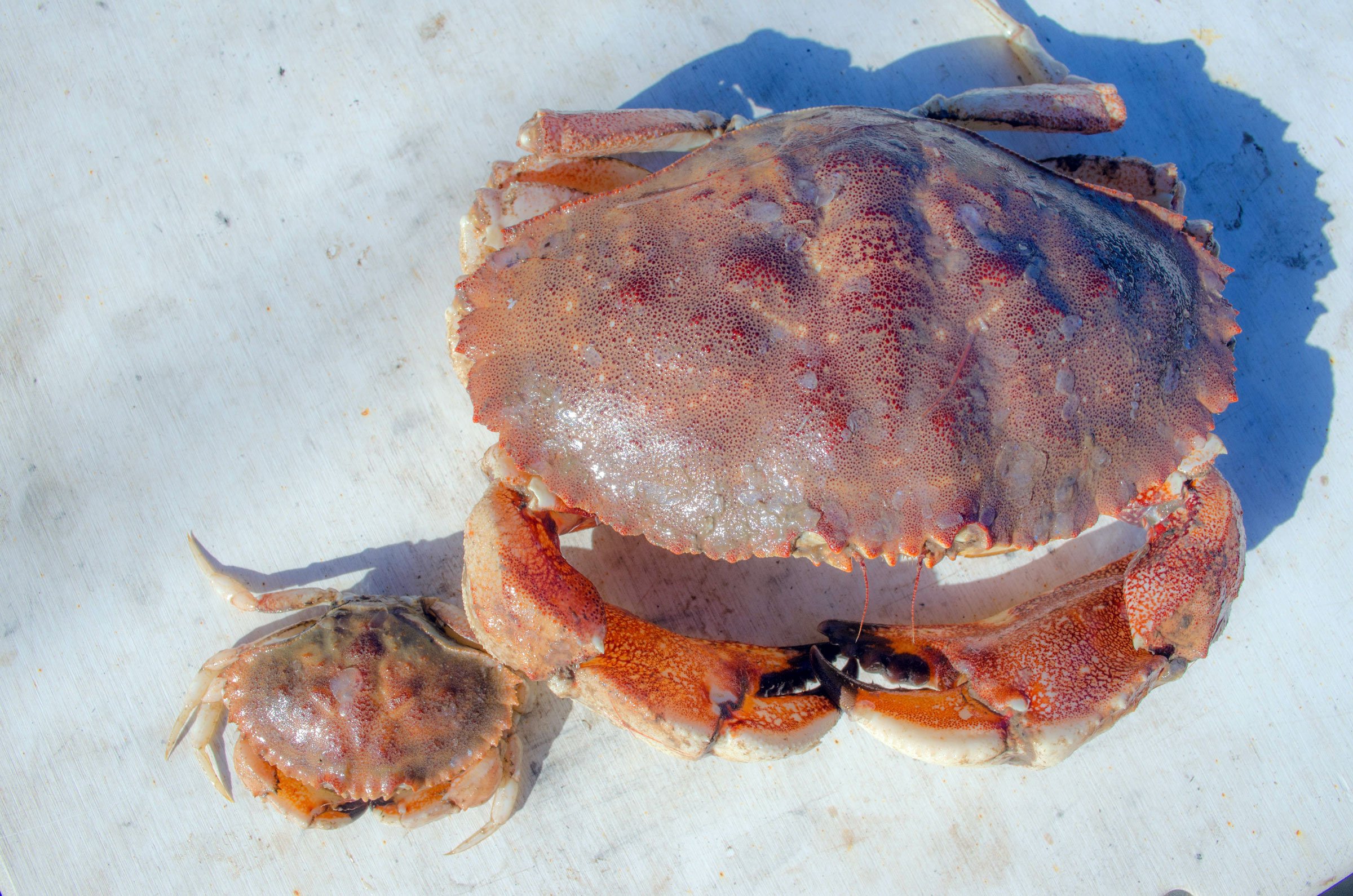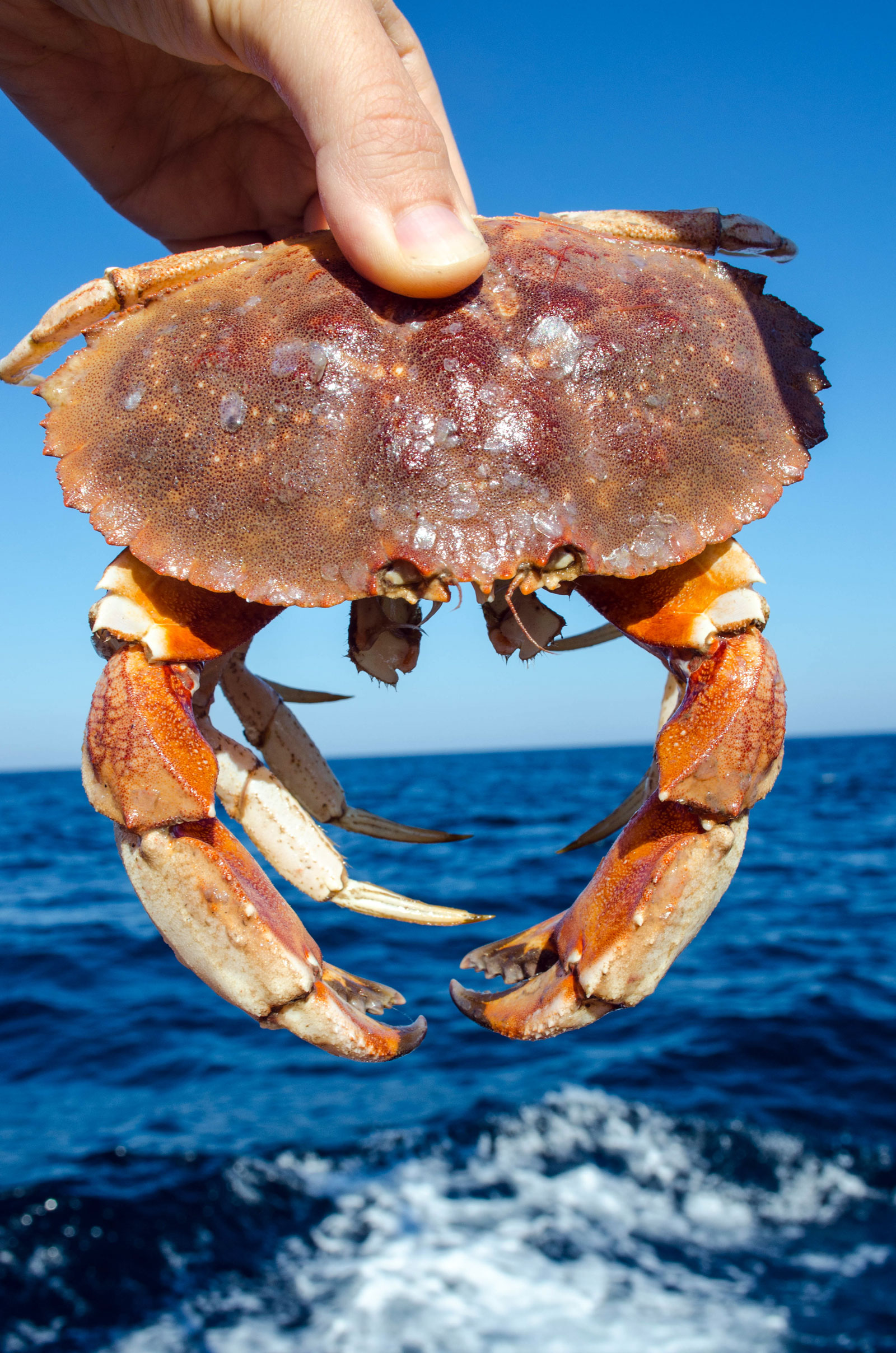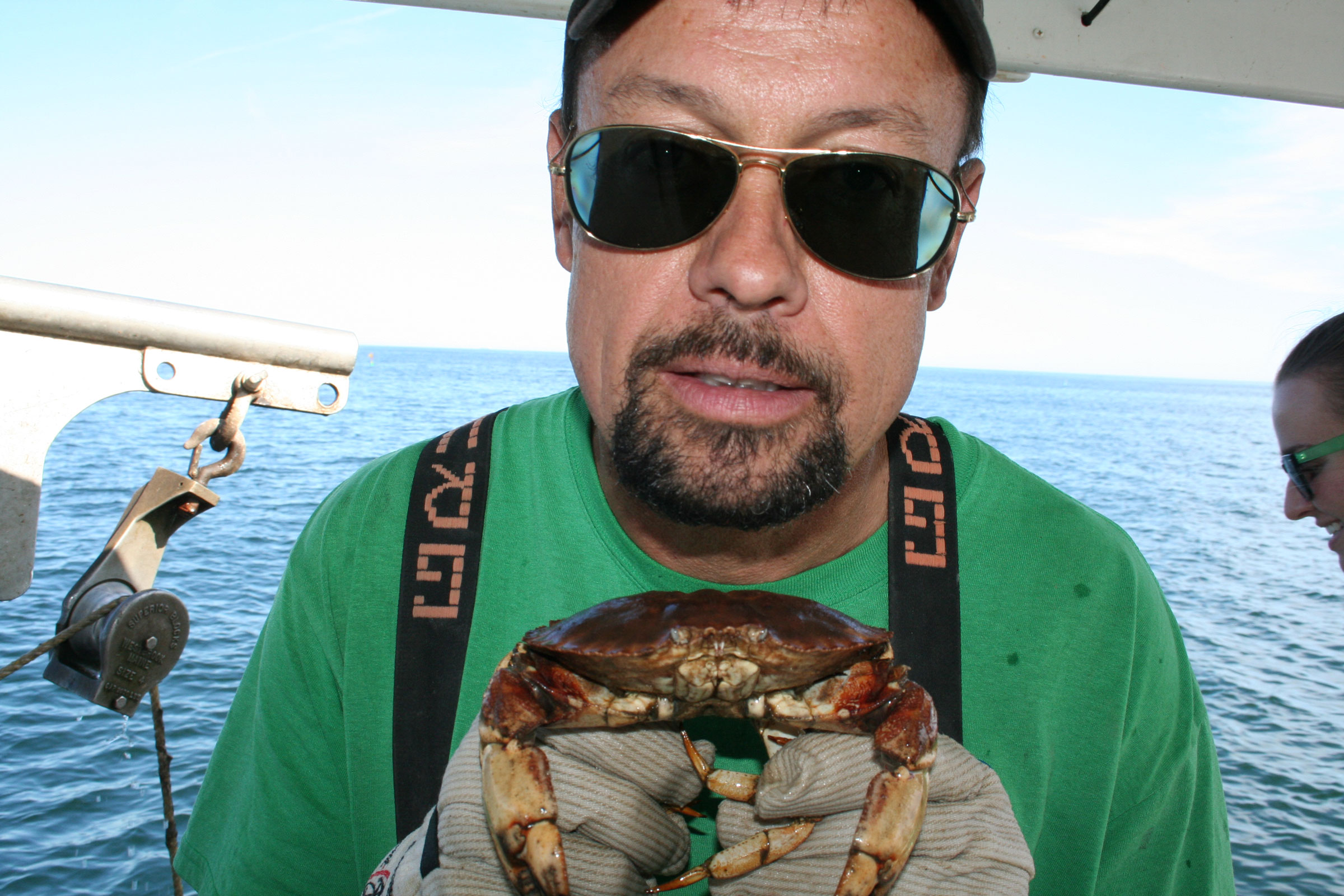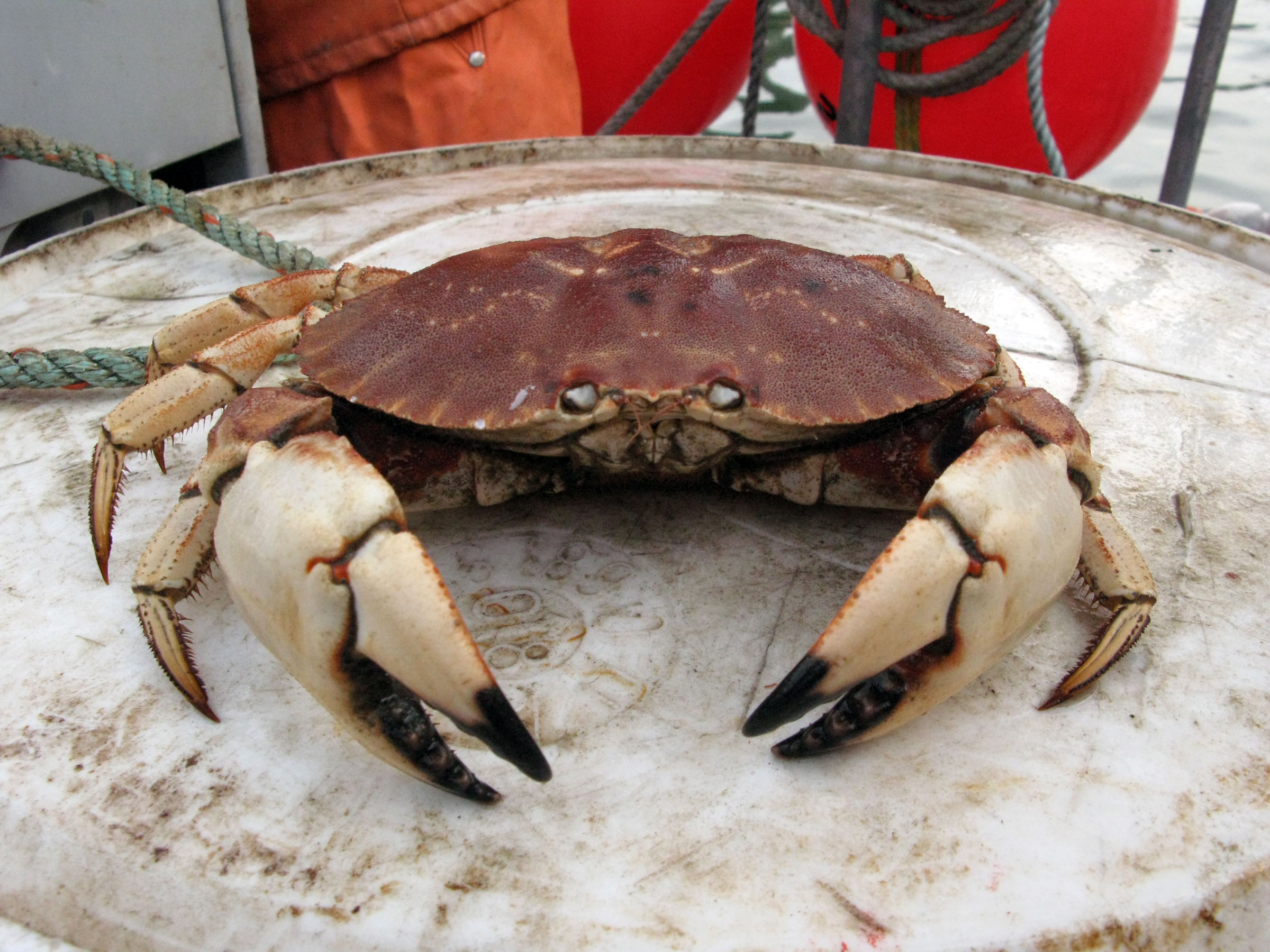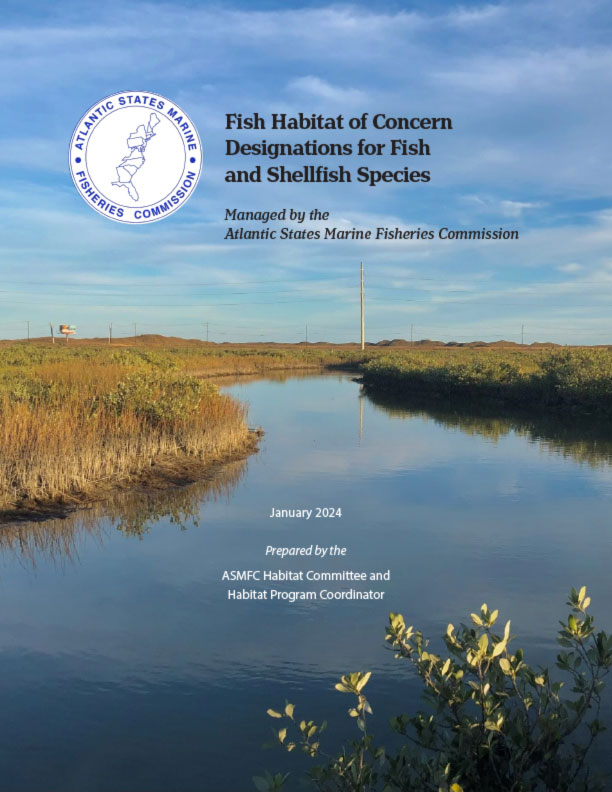Jonah Crab
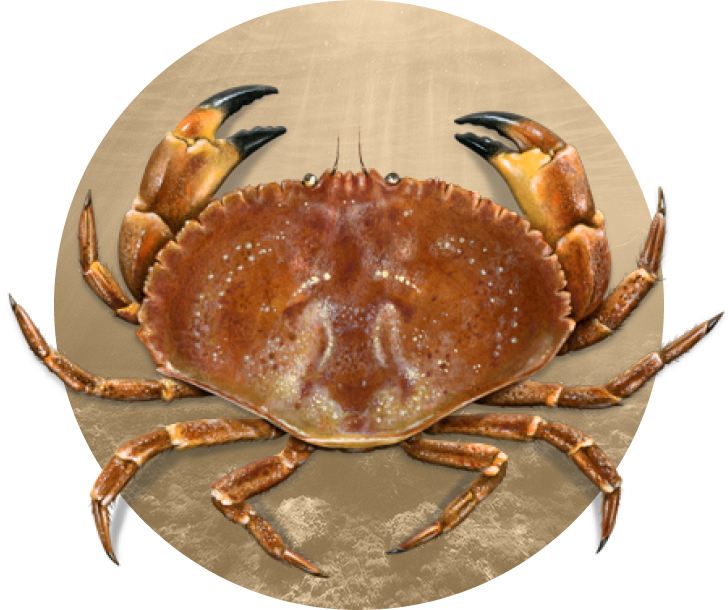
-

Population Abundance
Not depleted

Fishing Mortality
Unknown
Current Status
Stock status based on 2023 benchmark assessment, Coastwide population abundance remains above historic lows but recent declines in landings and catch per unit effort should be closely monitored. Measures implemented to prevent harvest of immature crabs and cap fishery to limit expansion.
Meeting Calendar
Next Meeting
No events found
Contacts
- Caitlin Starks, Senior FMP Coordinator (CStarks@asmfc.org)
- Management Board, Renee Zobel, Chair
- Technical Committee, Corinne Truesdale, Chair
- Advisory Panel, Earl Gwin, Chair
Species Information
Jonah crab are a valuable crustacean species inhabiting the Northwest Atlantic Ocean from Newfoundland, Canada to Florida. Highly sought after in both commercial and recreational fisheries, Jonah crabs support robust commercial landings primarily from the Offshore Southern New England (OSNE) and Inshore Gulf of Maine (IGOM) stocks. Managed under the Interstate Fishery Management Plan for Jonah Crab, the Commission oversees quota systems, size and possession limits, and adaptive management measures to ensure sustainable harvests. Recent stock assessments indicate that while overall populations remain above historic lows, declining catch per unit effort (CPUE) raises concerns about future stock health. Ongoing monitoring and adaptive management strategies aim to address uncertainties and support the resilience and long-term viability of Jonah crab populations for both fisheries and coastal communities.
Management
Jonah crab are managed under the Interstate Fishery Management Plan (FMP) for Jonah Crab (2015) and its two addenda. The FMP’s goal is to promote conservation, reduce the possibility of recruitment failure, and allow full utilization of the resource by the industry. The plan lays out specific management measures in the commercial fishery, including a 4.75” minimum size with zero tolerance and a prohibition on the retention of egg-bearing females. In the recreational fishery, the FMP sets a possession limit of 50 whole crabs per person per day. Due to the lack of data on the Jonah crab fishery, the FMP implements fishery-dependent data collection.
Addendum I (May 2016), establishes a bycatch limit of 1,000 crabs per trip for non‐trap gear (e.g., otter trawls, gillnets) and non‐lobster trap gear (e.g., fish, crab, and whelk pots). In doing so, the Addendum caps incidental landings of Jonah crab across all non‐directed gear types with a uniform bycatch allowance.
Addendum II (February 2017) establishes a coastwide standard for claw harvest to respond to concerns regarding the equity of the claw provision established in the FMP. Specifically, the Addendum allows Jonah crab fishermen to detach and harvest claws at sea, with a required minimum claw length of 2.75” if the volume of claws landed is greater than five gallons. Claw landings less than five gallons do not have to meet the minimum claw length standard. Fishermen may also harvest whole crabs which meet the 4.75” minimum carapace width. Addendum II also establishes a definition of bycatch based on a percent composition of catch in order to minimize the expansion of a small-scale fishery under the bycatch allowance. Through Addendum II, fishermen harvesting under the bycatch limit must have another species on board of greater weight than landed Jonah crabs.
In February 2018, the Board approved Addendum III to the FMP. The Addendum addresses concerns regarding deficits in existing reporting requirements by expanding the mandatory harvester reporting data elements, improving the spatial resolution of harvester data, establishing a 5-year timeline for implementation of 100% harvester reporting, and prioritizing the development of electronic harvester reporting. In addition, the Addendum improve biological sampling requirements by establishing a baseline of ten sampling trips per year in the American lobster/Jonah crab fishery, and encourages states with more than 10% of coastwide landings in either the lobster or Jonah crab fisheries to conduct additional sampling trips.
In March 2022, the Board approved Addendum IV, which expands on the Addendum III reporting improvements by establishing electronic tracking requirements for federally-permitted vessels in the American lobster and Jonah crab fisheries. Specifically, electronic tracking devices will be required for vessels with commercial trap gear area permits for Lobster Conservation Management Areas (LCMAs) 1, 2, 3, 4, 5, and Outer Cape Cod to collect high resolution spatial and temporal effort data. Through this action, the Board seeks to enhance data for the stock assessment, identify areas where fishing effort may overlap with endangered North Atlantic right whales, and document the footprint of the fishery to help reduce spatial conflicts with other ocean uses like wind energy development and aquaculture. For more information see the FAQ and requirements document.
Stock Status
The 2023 Jonah Crab Benchmark Stock Assessment and Peer Review Report indicates the range-wide population of Jonah crab remains above historic lows of the 1980s and 1990s. However, evidence of declining catch per unit effort (CPUE) in the fishery presents substantial concern and uncertainty for the status of the stock.
Based on life history and fishery characteristics, the assessment divided the population into four stocks: offshore Gulf of Maine (OGOM), inshore GOM (IGOM); offshore Southern New England (OSNE) and inshore SNE (ISNE). According to the stock indicators, IGOM, OGOM, and OSNE recruit, exploitable, and spawning abundance conditions from 2019-2021 were neutral or positive relative to historical periods. Indicators generally agree across these stocks that abundance has not been depleted compared to the historic low abundance observed in the 1980s and 1990s. There are no reliable abundance indicators for the ISNE stock so no determination about the condition of this stock’s abundance could be made at this time. Young-of-the-year settlement indicators generally show neutral conditions and do not indicate that recruitment in the GOM stocks will decline to historical lows in the near future. Settlement conditions are unknown for SNE stocks.
According to the Peer Review Panel, “Despite the limited availability of current data, there is considerable urgency for the assessment due to a very steep, three-year, decline in landings. Commercial landings have declined 51% in three years, after an unprecedented 30-fold rise in landings. Although the recent decline is not well-detected in fishery-independent stock indicators, there is some evidence of declining CPUE in the fishery, creating substantial concern and uncertainty for the status of the stock. Given the mixed signals, the status of the Jonah crab stock is highly uncertain.
Current conditions closely resemble early stages of the collapse of the Canada Jonah crab fishery in the early 2000s. In the first three years of the crash, Canada landings dropped 58%. Within five years, landings fell 97%, and stock biomass could no longer support a fishery. Fishery-independent trawl indicators had not fully captured the signals of a rapidly declining stock. However, declining fishery CPUE was observable preceding and during the landings crash.
Given the high level of uncertainty in the status of the Jonah crab stock, the Panel strongly recommends close monitoring of annual stock indicators in the next few years. Annual indicators can determine whether sharply declining recent landings are signaling the start of a ‘bust’ phase of a boom-and-bust arc, or are due to fishery and market-related factors uncoupled with Jonah crab abundance.” The Technical Committee recommended performing an annual data update of OGOM indicators to address this recommendation.
Commercial & Recreational Fisheries
There are notable differences between the fisheries that operate in each of the four stock areas: inshore Gulf of Maine (IGOM), offshore GOM (OGOM), inshore Southern New England (ISNE) and offshore SNE (OSNE). The vast majority of coastwide landings have come from the OSNE stock, accounting for 70-85% of annual coastwide landings from 2010-2021. The IGOM stock has supported the second largest fishery, accounting for 9-24% of annual coastwide landings from 2010-2021. Both the ISNE and OGOM have supported smaller fisheries, never accounting for more than 5% of annual coastwide landings from 2010-2021.

The high proportion of participants contributing to Jonah crab landings indicates a directed fishery in the OSNE stock that targets Jonah crab, yet only a small number of participants account for the large magnitude of landings from this stock. The other three stocks have fisheries that are characteristic of bycatch fisheries that are targeting American lobster. These fisheries have low proportions of participants that land Jonah crabs from pot/trap gears. In the case of the IGOM stock, there is a relatively high number of participants targeting lobsters and not landing Jonah crabs. This represents considerable capacity for growth in a Jonah crab fishery if these participants were to switch to targeting Jonah crab.
Landings have shown different trends across stocks, but the landings from OSNE declined steadily from the time series high in 2018 (17.6 million pounds) in the last three years of the time series (2019-2021). This trend is believed to be influenced by factors other than available abundance but should continue to be monitored closely. There was insufficient information to describe fishing mortality or exploitation with confidence and these population parameters remain major uncertainties.
In 2023, landings along the Atlantic Coast totaled approximately 12.4 million pounds of Jonah crab, representing $14.1 million in ex-vessel value. Landings decreased 12% from 2022 landings of 14 million pounds, while ex-vessel value decreased 36% from the 2022 value ($22 mil). Anecdotal information from the industry suggests Jonah crab landings and price are highly dependent on market conditions, which have affected recent fishery trends.
The magnitude of recreational landings is unknown, but is expected to be minimal.
Life History
Jonah crab (Cancer borealis) are distributed in the waters of the Northwest Atlantic Ocean primarily from Newfoundland, Canada to Florida. The Jonah crab life cycle is poorly described and what is known is largely compiled from a patchwork of studies. Female crab are believed to move nearshore during the late spring and summer and then return offshore in the fall and winter. The reasons for this inshore migration are unknown, but maturation, spawning and molting have all been postulated. Due to the lack of a widespread and well-developed aging method for crustaceans, the age and growth of Jonah crab is poorly described. It is theorized that the size of maturity for Jonah crab in US waters is between 4” and 5” based off of studies on the Scotian Shelf and Virginia. Like other Cancer crab species, Jonah crab consume a variety of prey including snails, arthropods, algae, mussels and polychaetes.
News & Resources
Explore recent news, management updates, and scientific reports to gain a deeper understanding of ongoing conservation efforts and sustainability strategies.
-
-
-
Prepared for the Commissioner Manual
-
The 2023 Jonah Crab Benchmark Stock Assessment determined that the abundance of three of four Jonah crab stocks (Offshore Southern New England or OSNE, Inshore Gulf of Maine or IGOM, and Offshore Gulf of Maine or OGOM) has not been depleted to historical lows observed in the 1980s and 1990s.
-
-
Updated 2024
-
The Habitat Committee drafted text descriptions of FHOC for each Commission-managed species drawing on information from the current description of FHOC in the FMPs, species fact sheets, other ASMFC publications, and current literature.
-
Response to Board Task Following 2023 Stock Assessment
-
-
ASMFC Approved Vessel Tracking Devices and Contact Information
-
The Jonah Crab Advisory Panel (AP) met on Thursday, December 14 to review the recently completed benchmark stock assessment for Jonah crab, and provide input on possible market and economic indicators for the fishery.
-
-
Beaufort, NC – The 2023 Jonah Crab Benchmark Stock Assessment and Peer Review Report indicates the range- wide population of Jonah crab remains above historic lows of the 1980s and 1990s. However, evidence of declining catch per unit effort (CPUE) in the fishery presents substantial concern and uncertainty for the status of the stock. Based…
-
The Jonah Crab Benchmark Stock Assessment and Peer Review Report is divided into two sections: Jonah Crab Benchmark Stock Assessment Peer Review and Jonah Crab Benchmark Stock Assessment
Get Hooked on ASMFC News
Dive into the latest updates and catch all the important news by joining our newsletter mailing list. Stay in the loop with meeting agendas, fisheries management news, and more.

